 W
WFrancis Asbury was one of the first two bishops of the Methodist Episcopal Church in the United States. During his 45 years in the colonies and the newly independent United States, he devoted his life to ministry, traveling on horseback and by carriage thousands of miles to those living on the frontier.
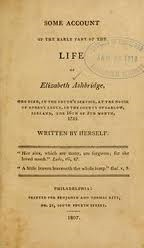 W
WElizabeth Ashbridge was an 18th-century New England Quaker minister and autobiographer born in Cheshire, England.
 W
WRichard Bache, born in Settle, Yorkshire, England, immigrated to Philadelphia, in the colony of Pennsylvania, where he was a businessman, a marine insurance underwriter, and later served as head of the American Post Office. He also was the son-in-law of Benjamin Franklin.
 W
WRev. Jonathan Boucher, FRSE, FSA was an English clergyman, teacher, preacher and philologist.
 W
WWilliam Buckland (1734–1774) was a British architect who designed in colonial Maryland and Virginia.
 W
WEsther de Berdt Reed was active in the American Revolutionary War as a civic leader for soldiers' relief, who formed and led the Ladies Association of Philadelphia to provide aid for George Washington's troops during the war.
 W
WHoratio Lloyd Gates was a British-born soldier who served as a leading American general during the early years of the Revolutionary War. He took credit for the American victory in the Battles of Saratoga (1777) – a matter of contemporary and historical controversy – and was blamed for the defeat at the Battle of Camden in 1780. Gates has been described as "one of the Revolution's most controversial military figures" because of his role in the Conway Cabal, which attempted to discredit and replace General George Washington; the battle at Saratoga; and his actions during and after his defeat at Camden.
 W
WButton Gwinnett was a British-born American founding father who, as a representative of Georgia to the Continental Congress, was one of the signatories on the United States Declaration of Independence. He was also, briefly, the provisional president of Georgia in 1777, and Gwinnett County was named for him. Gwinnett was killed in a duel by rival Lachlan McIntosh following a dispute after a failed invasion of East Florida.
 W
WJames Habersham was a pioneering merchant and statesman in the British North American colony of Georgia. Habersham is credited with opening the first direct trade between Savannah, Georgia, and London, England. He was an influential advocate for slavery in the colonies and served as King Secretary of the Province and as President of the King's Council. In opposition to his adult sons, Habersham remained a Loyalist during the American Revolution. All three of Habersham's sons became actively involved in the Revolutionary movement. Joseph Habersham became a zealous revolutionary in 1774. After July 1776, both he and brother John took up arms against the British and their loyalist allies, while James Jr. contributed to the revolution through political and financial service. The senior Habersham's death in 1775 prevented the painful family division from extending into the war years.
 W
WDr. Alexander Hamilton was a Scottish-born doctor and writer who lived and worked in Annapolis in 18th-century colonial Maryland. Historian Leo Lemay says his 1744 travel diary Gentleman's Progress: The Itinerarium of Dr. Alexander Hamilton is "the best single portrait of men and manners, of rural and urban life, of the wide range of society and scenery in colonial America." His diary covered Maryland to Maine; and biographer Elaine Breslaw says he encountered:the relatively primitive social milieu of the New World. He faced unfamiliar and challenging social institutions: the labor system that relied on black slaves, extraordinarily fluid social statuses, distasteful business methods, unpleasant conversational quirks, as well as variant habits of dress, food, and drink."
 W
WJohn Hazelwood served as a Commodore in the Pennsylvania Navy and Continental Navy and was among the most noted naval officers during the American Revolutionary War. Born in England about 1726, he became a mariner and settled in Philadelphia early in life, became married and had several children. Promoted to Commodore during the Philadelphia campaign, he also became commander of Fort Mifflin while it was under siege by the British. Throughout the campaign Hazelwood and General Washington were in frequent communication with letters. During the weeks spent engaging the British navy on the Delaware River Hazelwood innovated many naval tactics, kept the British navy at bay for weeks and played a major role in the development of riverine warfare for the American navies. Recommended by Washington and his council, Hazelwood was chosen to lead a large fleet of American ships and riverboats up river to safety. For his bravery and distinguished service Congress awarded him with a ceremonial military sword, while the famous presidential artist Charles Peale found Hazelwood worthy enough to paint his portrait. After the Revolution Hazelwood lived out his remaining years in Philadelphia.
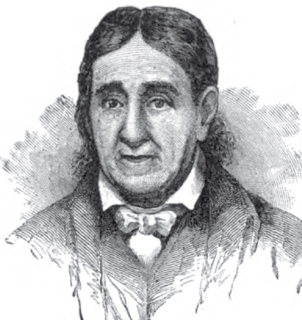 W
WJohn Gottlieb Ernestus Heckewelder was an American missionary for the Moravian Church.
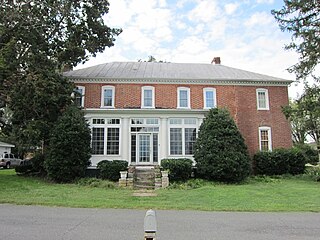 W
WAlexander Henderson was a merchant and politician in the British colony and American state of Virginia.
 W
WDr. Alexander Hewat was the first historian of South Carolina and Georgia, best known for his two volume work "An Historical Account of the Rise and Progress of the Colonies of South Carolina and Georgia". He remained loyal to the King during the American Revolution, and as a result his property was seized and he was expelled in 1777.
 W
WThomas Hopkinson was a lawyer, public official, and prominent figure in colonial Philadelphia, Pennsylvania.
 W
WJames Iredell was one of the first Justices of the Supreme Court of the United States. He was appointed by President George Washington and served from 1790 until his death in 1799. His son, James Iredell Jr., was a Governor of North Carolina.
 W
WJames Jackson was an early British-born Georgia politician of the Democratic-Republican Party. He was a member of the U.S. House of Representatives from 1789 until 1791. He was also a U.S. Senator from Georgia from 1793 to 1795, and from 1801 until his death in 1806. In 1797 he was elected 23rd Governor of Georgia, serving from 1798 to 1801 before returning to the senate.
 W
WWilliam Jackson was a figure in the American Revolution, most noteworthy as the secretary to the United States Constitutional Convention. He also served with distinction in the Continental Army during the Revolutionary War. After the war he served as one of President George Washington's personal secretaries.
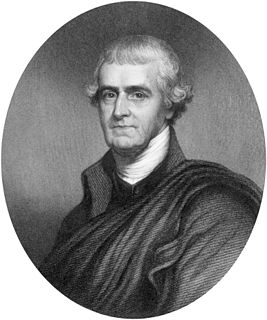 W
WNoble Wimberly Jones was an American physician and statesman from Savannah, Georgia. A leading Georgia patriot in the American Revolution, he served as a delegate to the Continental Congress in 1781 and 1782.
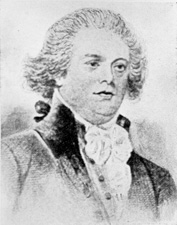 W
WJohn Laurance was a delegate to the 6th, 7th and 8th Congresses of the Confederation, a United States Representative and United States Senator from New York and a United States District Judge of the United States District Court for the District of New York.
 W
WBenjamin Lay was an Anglo-American Quaker humanitarian and abolitionist. He is best known for his early and strident anti-slavery activities which would culminate in dramatic protests. He was also an author, farmer, an early vegetarian, and distinguished by his early concern for the ethical treatment of animals.
 W
WAnn Lee, commonly known as Mother Ann Lee, was the founding leader of the United Society of Believers in Christ's Second Appearing, or the Shakers.
 W
WCharles Henry Lee served as a general of the Continental Army during the American Revolutionary War. He also served earlier in the British Army during the Seven Years War. He sold his commission after the Seven Years War and served for a time in the Polish army of King Stanislaus II.
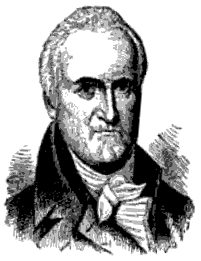 W
WThomas Leiper was a Scottish American merchant and local politician who served in the American Revolutionary War. He was the first American to construct a permanent working railway by creating a short span on his property in Nether Providence Township, Delaware County, Pennsylvania.
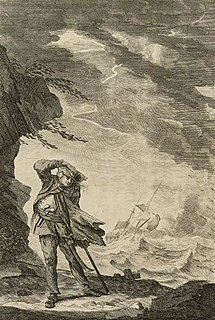 W
WEdward "Ned" Low was a notorious pirate of English origin during the latter days of the Golden Age of Piracy, in the early 18th century. Low was born into poverty in Westminster, London, and was a thief from an early age. He moved to Boston, Massachusetts, as a young man. His wife died in childbirth in late 1719. Two years later, he became a pirate, operating off the coasts of New England and the Azores, and in the Caribbean.
 W
WCapt. Darby Lux I (1695–1750) was a mariner, merchant, and Justice of Baltimore County, Maryland. The son of an English clergyman, was born in Kenton Parish, Devonshire, England, on June 15, 1695. He was christened on June 30, 1696, in Kenton. Darby immigrated in the early 1720s and settled in Anne Arundel County. He was a mariner by occupation from 1720–1742.
 W
WGeneral William Malcolm was a New York City merchant and officer in the American Revolution. He commanded Malcolm's Regiment, with Aaron Burr as his second in command.
 W
WAngus McDonald was a prominent Scottish American military officer, frontiersman, sheriff and landowner in Virginia.
 W
WThomas McIlworth (c.1720—c.1769?) was a colonial American portraitist, active mainly in the area around Schenectady, New York.
 W
WLachlan McIntosh was a Scottish American military and political leader during the American Revolution and the early United States. In a 1777 duel, he fatally shot Button Gwinnett, a signer of the Declaration of Independence.
 W
WRobert Morris, Jr. was an English-born merchant and a Founding Father of the United States. He served as a member of the Pennsylvania legislature, the Second Continental Congress, and the United States Senate, and he was a signer of the Declaration of Independence, the Articles of Confederation, and the United States Constitution. From 1781 to 1784, he served as the Superintendent of Finance of the United States, becoming known as the "Financier of the Revolution". Along with Alexander Hamilton and Albert Gallatin, he is widely regarded as one of the founders of the financial system of the United States.
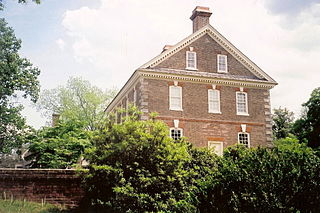 W
WThomas "Scotch Tom" Nelson (1677–1747) was an businessman and politician who immigrated from England to become a merchant at Yorktown in the Colony of Virginia. He was from Penrith, Cumberland. Arriving at the beginning of the 18th century, he was the first Virginian of the Nelsons, one of the First Families of Virginia.
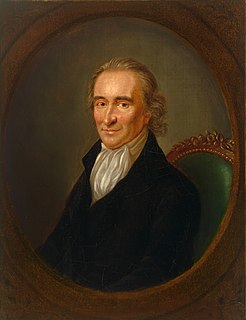 W
WThomas Paine was an English-born American political activist, philosopher, political theorist, and revolutionary. He authored Common Sense (1776) and The American Crisis (1776–1783), the two most influential pamphlets at the start of the American Revolution, and helped inspire the patriots in 1776 to declare independence from Great Britain. His ideas reflected Enlightenment-era ideals of transnational human rights. Historian Saul K. Padover described him as "a corsetmaker by trade, a journalist by profession, and a propagandist by inclination".
 W
WRichard Peters, born in Liverpool, became an attorney, Anglican minister, and civil servant. In 1735 he emigrated to Pennsylvania, where he served in numerous posts for the Penn family, including on the Governor's Council from 1749 to 1775, and eventually became rector of Christ Church in Philadelphia.
 W
WJoseph Priestley was an English chemist, natural philosopher, separatist theologian, grammarian, multi-subject educator, and liberal political theorist who published over 150 works. He has historically been credited with the discovery of oxygen, having isolated it in its gaseous state, although Carl Wilhelm Scheele and Antoine Lavoisier also have strong claims to the discovery, Scheele having discovered it in 1772, two years before Priestley.
 W
WHoratio Sharpe (1718–1790) was the 22nd proprietary governor of Maryland from 1753 to 1768 under the restored proprietary government of Maryland.
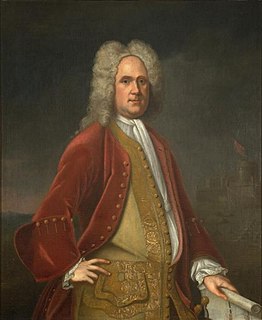 W
WAlexander Spotswood was a Lieutenant-Colonel in the British Army and a noted Lieutenant Governor of Virginia. He is noted in Virginia and American history for a number of his projects as governor, including his exploring beyond the Blue Ridge Mountains, his establishing what was perhaps the first colonial iron works, and his negotiating the Treaty of Albany with the Iroquois Nations of New York.
 W
WArthur St. Clair was a Scottish-American soldier and politician. Born in Thurso, Scotland, he served in the British Army during the French and Indian War before settling in Pennsylvania, where he held local office. During the American Revolutionary War, he rose to the rank of major general in the Continental Army, but lost his command after a controversial retreat from Fort Ticonderoga.
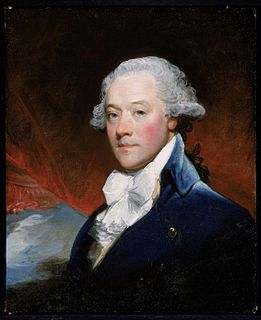 W
WJames Swan was a colorful personality based in Boston in the 18th and 19th centuries. He was a member of the Sons of Liberty and participated in the Boston Tea Party. Swan was twice wounded at the Battle of Bunker Hill, he next became secretary of the Massachusetts Board of War and the legislature. During the time he held that office, he drew heavily on his private funds to aid the Continental Army, which was then in dire need of funds to arm and equip the soldiers who were arriving in Boston from all parts of New England. After the American Revolution Swan privately assumed the entire United States French debts at a slightly higher interest rate. Swan then resold these debts at a profit on domestic U.S. markets. The United States no longer owed money to foreign governments, although it continued to owe money to private investors both in the United States and in Europe. This allowed the young United States to place itself on a sound financial footing. On principles of loyalty, he spent 22 years—more than a quarter of his life—in the Paris Sainte-Pélagie Prison.
 W
WWilliam Tennent was an early American religious leader and educator in British North America.
 W
WThomas Tingey was a commodore of the United States Navy. Originally serving in the British Royal Navy, Tingey later served in the Continental Navy. Tingey served with distinction during the Quasi-War and served as the commandant of the navy yard until his death.
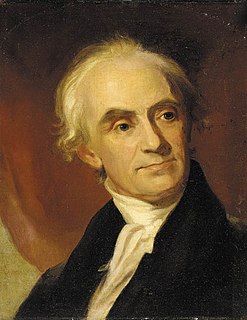 W
WJohn Vaughan was a wine merchant, philanthropist, and long-time treasurer and librarian of the American Philosophical Society. A native of England, Vaughan settled in Philadelphia in 1782, becoming a respected citizen of the city, and working for literary, scientific and benevolent causes. During five decades of service to the Society, Vaughan was instrumental in building its library collection and introducing many scientists and historians to each other through his letters and Sunday breakfasts.
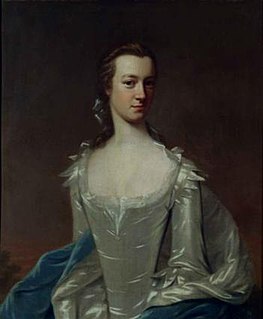 W
WMargaret Wake Tryon was an English heiress. She was the wife of William Tryon, who served as the Colonial Governor of North Carolina and the Colonial Governor of New York. The namesake of Wake County in North Carolina, she is one of three women, along with Charlotte of Mecklenburg-Strelitz and Virginia Dare, to have a North Carolinian county named after her. She was known for her interest in military strategy, which was controversial for upper-class women of her time.
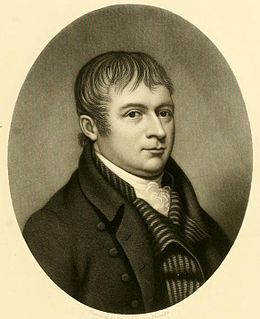 W
WJohn Williams was an American physician and politician from Salem, New York. He was most notable for his service in the United States House of Representatives from 1795 to 1799.
 W
WCharles Willing was a Philadelphia merchant, trader and politician; twice he served as Mayor of Philadelphia, from 1748 until 1749 and again in 1754.
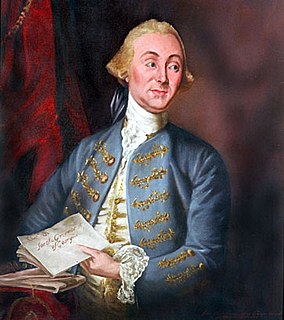 W
WJames Wright was a colonial lawyer and jurist who was the last British Royal Governor of the Province of Georgia. He was the only Royal Governor of the Thirteen Colonies to regain control of his colony during the American Revolutionary War.